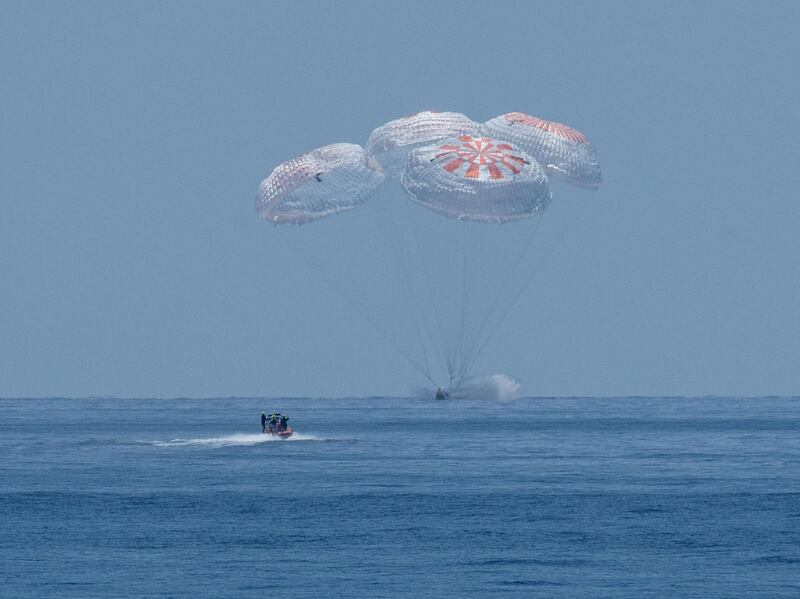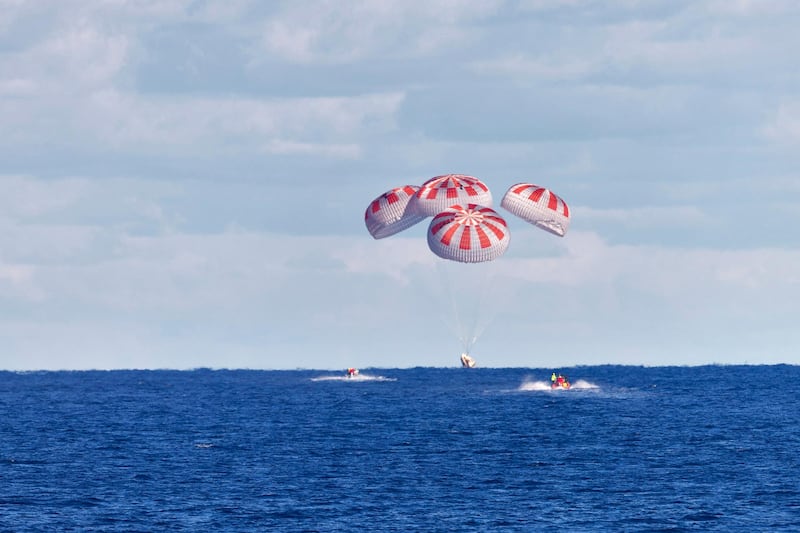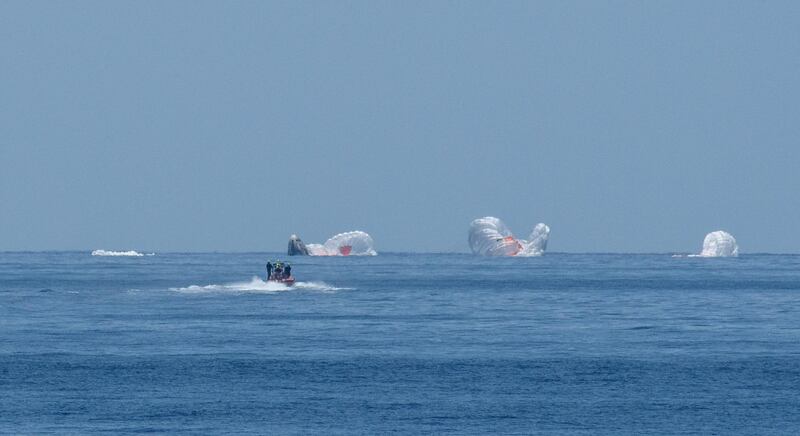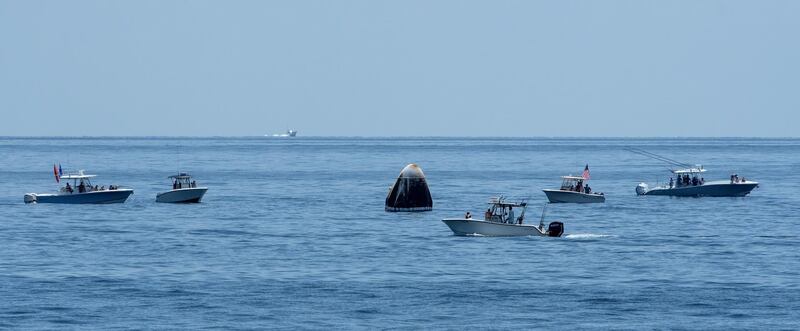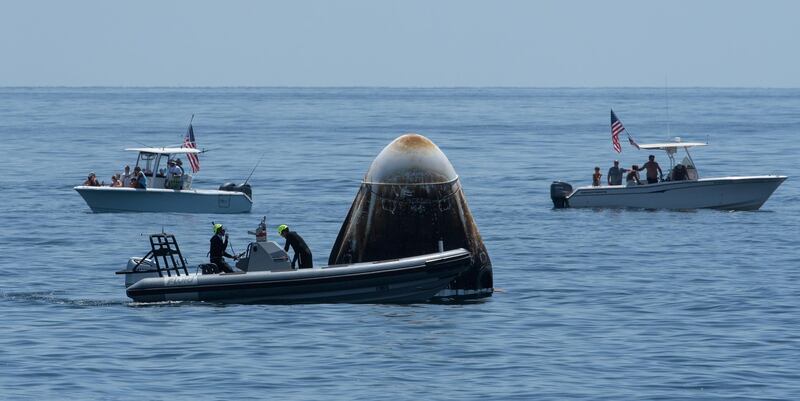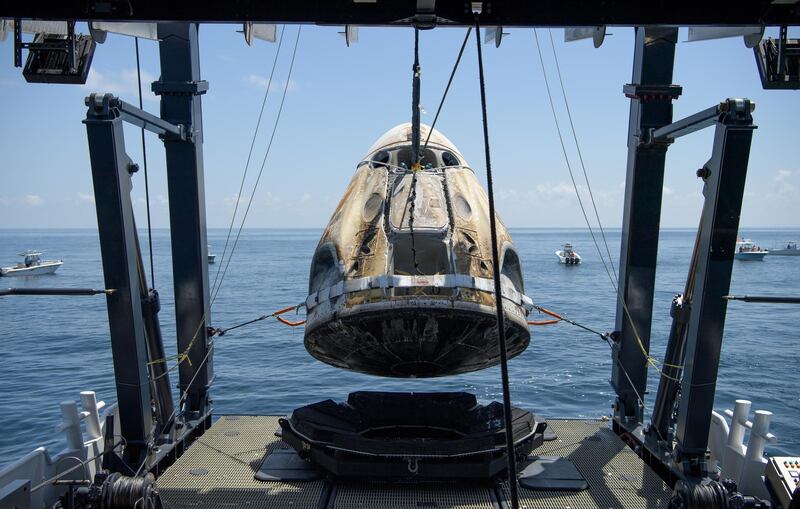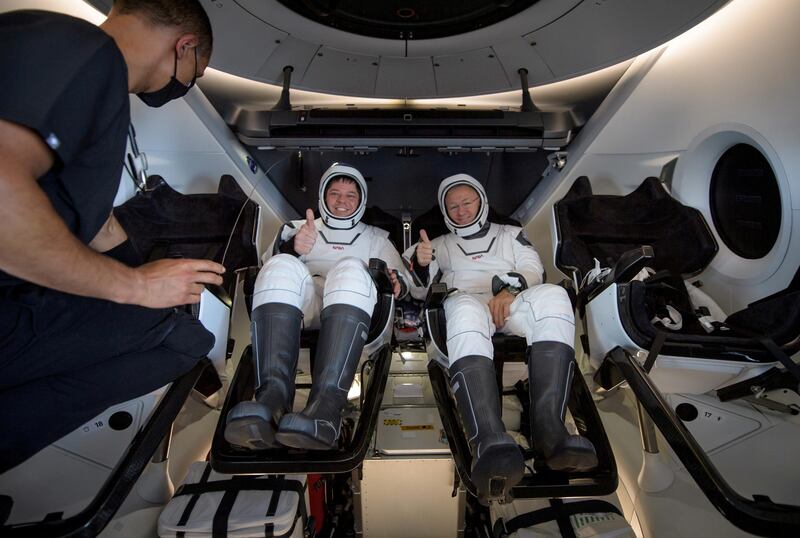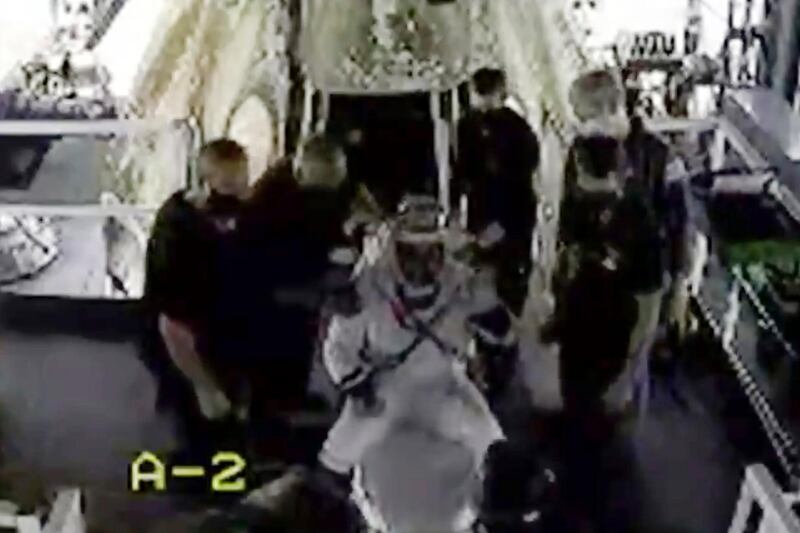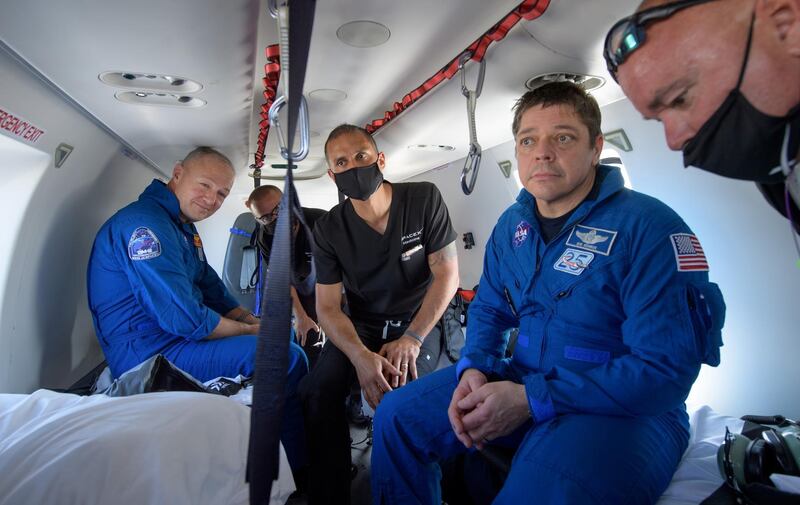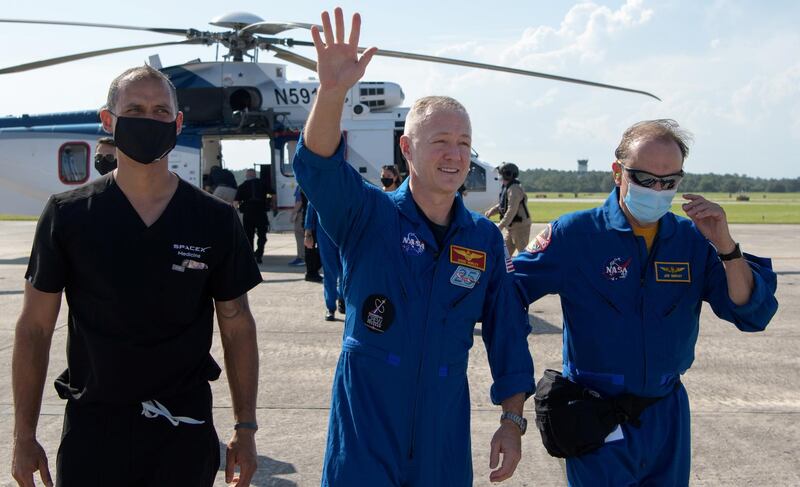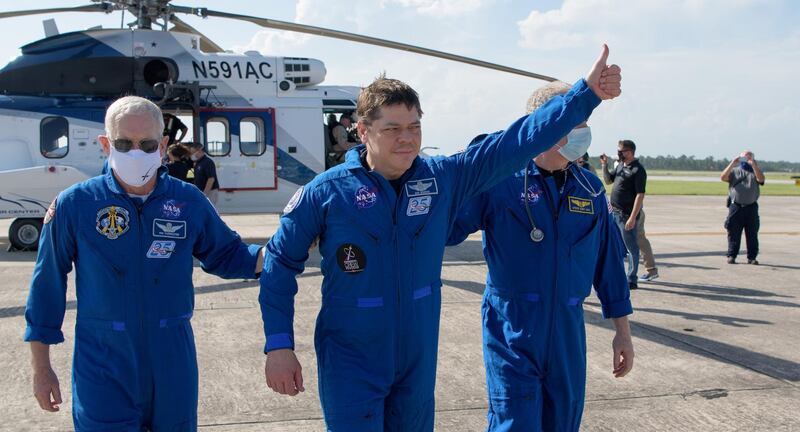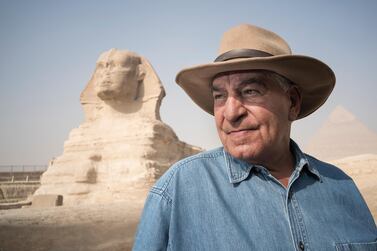Two Nasa astronauts who crewed the SpaceX Dragon capsule have returned to Earth, splashing down in the Gulf of Mexico.
The successful return from the International Space Station ends an unprecedented test flight by Elon Musks’s SpaceX company.
It was the first splashdown by US astronauts in 45 years, in the first commercially built and operated spacecraft to carry people to and from orbit.
The first ever privately-run spacecraft splashes down
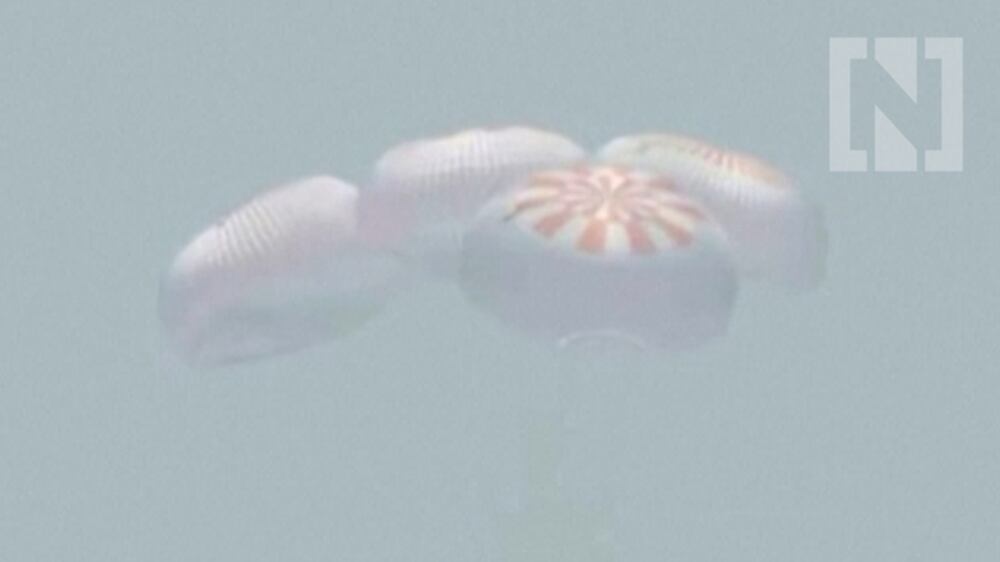
The return clears the way for another SpaceX crew launch as early as next month and possible tourist flights next year.
Test pilots Doug Hurley and Bob Behnken rode the Dragon capsule back to Earth less than a day after departing the International Space Station and two months after blasting off from Florida.
At 1:59pm ET, the @SpaceX Dragon Endeavour hatch opened. @AstroBehnken and @Astro_Doug are minutes away from exiting the vehicle. #LaunchAmerica pic.twitter.com/qEBqvMEYqV
— NASA (@NASA) August 2, 2020
The capsule parachuted into the calm gulf waters about 65 kilometres off the coast of Pensacola, hundreds of kilometres from Tropical Storm Isaias pounding Florida's Atlantic coast.
"Welcome back to planet Earth and thanks for flying SpaceX," Mission Control said from the company's headquarters.
Mr Hurley replied: "It was truly our honour and privilege."
The astronauts' ride home in the capsule named Endeavour was fast, bumpy and hot, at least on the outside.
The spacecraft went from an orbital speed of 28,000kph to 560kph during atmospheric re-entry. It slowed to 24kph before splashdown.
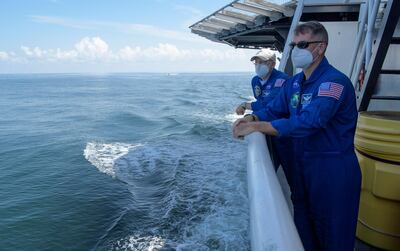
Peak heating during the descent was 1,900°C. The anticipated top G forces felt by the crew were four to five times the force of Earth's gravity.
"Endeavour has you loud and clear," Mr Hurley radioed following a brief communications blackout caused by the heat of re-entry.
A SpaceX recovery ship with more than 40 staff, including doctors and nurses, moved in quickly after splashdown and lifted the 4.5-metre capsule on to its deck.
Two smaller, faster boats arrived first while the capsule was slowly bobbing upright in the water.
To keep the returning astronauts safe in the pandemic, the recovery crew were quarantined for two weeks and tested for the coronavirus.
At 1:59pm ET, the @SpaceX Dragon Endeavour hatch opened. @AstroBehnken and @Astro_Doug are minutes away from exiting the vehicle. #LaunchAmerica pic.twitter.com/qEBqvMEYqV
— NASA (@NASA) August 2, 2020
After medical examinations, the astronauts were expected to fly home to Houston for a reunion with their wives and sons.
SpaceX made history with this mission, which was launched on May 30 from Nasa’s Kennedy Space Centre.
It was the first time a private company launched people into orbit and the first launch of Nasa astronauts from home turf in almost a decade.
Mr Hurley served as pilot of Nasa’s last space shuttle flight in 2011 and the commander of this SpaceX flight.
Mr Musk monitored the descent and splashdown from SpaceX Mission Control in Hawthorne, California.
SpaceX needs six weeks to inspect the capsule before launching the next crew about the end of September.
The next mission of four astronauts will spend six months aboard the space station.
Mr Hurley and Mr Behnken's capsule will be refurbished for another flight next spring.
Meanwhile, a Houston company run by a former Nasa official has former a partnership with SpaceX to send three customers to the space station in the autumn of 2021.
A visibly excited SpaceX founder Elon Musk said the mission heralded a new era.
"We're going to go to the Moon, we're going to have a base on the Moon; we're going to Mars," he said.
"I'm not very religious but I prayed for this one."
President Donald Trump, who had travelled to Florida for the capsule's launch two months ago, hailed its safe return.
"Thank you to all!" he tweeted. "Great to have NASA Astronauts return to Earth after very successful two month mission."
The United States has had to rely on Russia for rides to space since the last Space Shuttle flew in 2011.
